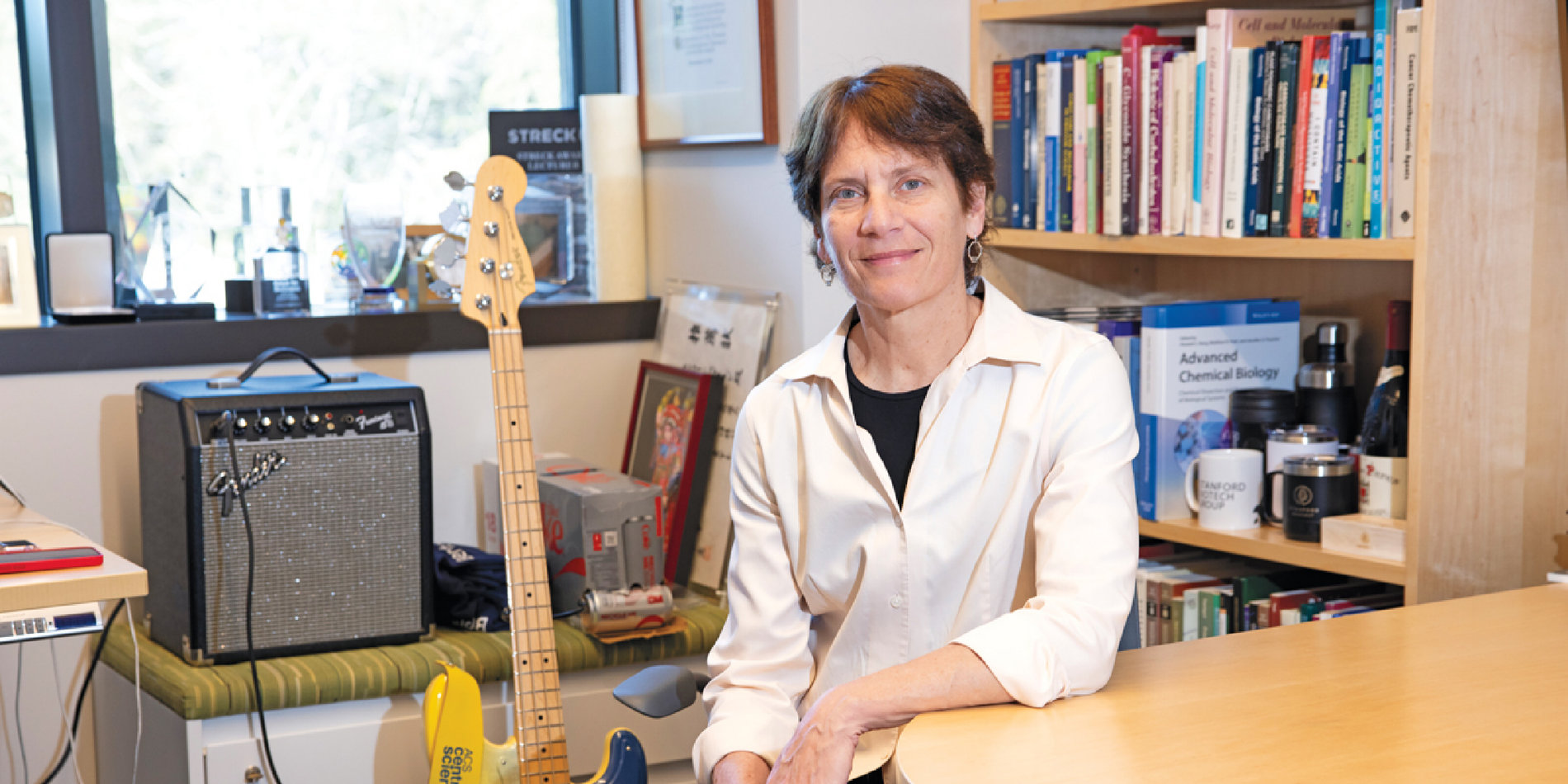Stanford chemists develop a tool to study rigid structures on cancer cells
Magnify the surface of almost any cell and you would see a forest of stiff tree-like structures. In cancers, that forest helps tumors survive, expand, and metastasize, but how exactly they do this has largely remained a mystery. Now, Stanford ChEM-H researchers report in Proceedings of the National Academy of Sciences that they’ve found a tool to help them cut down and study those forests, bringing scientists one step closer to demystifying them.

The trees that researchers Carolyn Bertozzi, Anne T. and Robert M. Bass Professor in the School of Humanities and Sciences and Baker Family Co-Director of Stanford ChEM-H, postdoctoral fellow Stacy Malaker and Chemistry/Biology Interface graduate student Kayvon Pedram were interested in are actually large proteins called mucins, and they pose some special challenges. Usually, scientists study large proteins using enzymes to break them into smaller fragments and then feed them into instruments called mass spectrometers, which can more easily read those smaller parts than the whole protein. The problem is, the usual enzymes don’t work on mucins, which are densely coated in sugar molecules, like a bushy pipe cleaner.
The quest to find an enzyme that would work began with a closer look at where mucins naturally appear. Mucins are found on healthy cells all over the human body, especially in places that produce mucus, such as the lungs and intestines. Since so many cells manufacture mucins, surely there was something that could chew them up.
The breakthrough came when Pedram looked into an enzyme that the bacteria E. coli use to break through mucus in the human gut. The team discovered that the enzyme, called StcE and pronounced “sticky,” cuts apart mucins, making them easier to study with existing techniques, while leaving the rest of the cell, even parts that might seem easier to eat up, untouched.
Since mucins are present on almost all cells, the new tool could help scientists answer questions that were previously unsolvable because of the inability to study or remove mucins, like understanding and exploiting their role in cancer. “Cancer cells will increase and change their mucins to hide from the immune system,” says Malaker. “We know that mucins are super important, but we haven’t had a tool to manipulate them before.”
In preliminary studies, the researchers found that cutting mucins from cancer cells could make them more recognizable to some kinds of immune cells. Now, the team is partnering with Oliver Dorigo, professor of obstetrics and gynecology, through a collaboration funded by a Stanford ChEM-H Testing Molecular Hypotheses in Human Subjects seed grant. They are studying how a particular kind of mucin compromises the immune system in patients with ovarian cancer and are exploring whether StcE could be used as a potential therapy.
Tackling cancer could be just the beginning of what StcE could do. “What I find exciting is that we’ve provided a tool,” says Pedram. “This could make a whole new set of questions accessible.”



